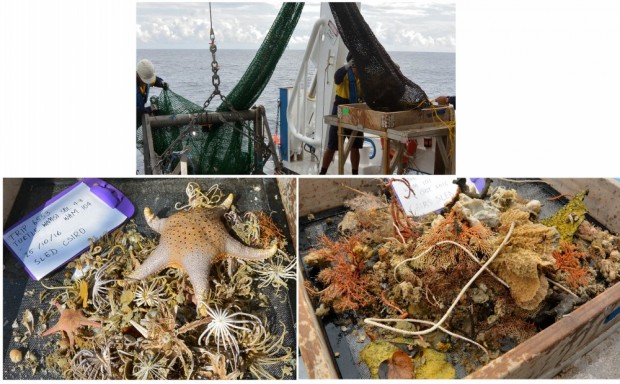Where
Lynher Bank, offshore north-west of Cape Leveque in the Kimberley Marine Park
Who
Australian Institute of Marine Science (AIMS), WA Museum, CSIRO, Curtin University, Western Australian Marine Science Institution (WAMSI), Department of Biodiversity, Conservation and Attractions (WA).
When
2016
Why
Flatback turtles (Natator depressus) are endemic to northern Australia and only one of two sea turtle species that are not distributed globally (out of a total of 7 species). Nesting occurs only on tropical Australian beaches, many in northwest Australia’s remote Kimberley region. Under threat from coastal development, predation from feral animals and climate change, flatback turtles are listed as a vulnerable species under WA Biodiversity Conservation Act 2016 and the Commonwealth Protection and Biodiversity Conservation Act 1999. They are also listed as data deficient by the International Union for Conservation of Nature. One aspect of this is that little is known about what flatback turtles eat, which is key information that can be used to help develop effective management strategies for their conservation.
How
A team of scientists on board the RV Solander spent 15 days collecting data in the vicinity of Lynher Bank, a flatback turtle foraging hotspot about 120 nautical miles north of Broome. The foraging hotspot was identified using data from satellite tracking devices attached to flatback turtles from eight WA nesting beaches, supplied by Chevron Australia, Pendoley Environmental, Department of Biodiversity, Conservation and Attractions, Woodside, Rio Tinto and BHP Billiton. Using a combination of towed video, benthic sleds and plankton nets, scientists were able to build a picture of what marine community types exist in this region of the Kimberley coast, and what food types are available for the turtles to eat.
What did we learn?
The towed video data revealed communities dominated by soft corals and dense sponge gardens. Gorgonians, seawhips and feather stars were commonly seen across the entire study area, while hydriods were most commonly observed in the northeast, and a unusual field of anemones was found in the southeast. Of the 280 samples of benthic and pelagic organisms collected using the benthic sleds and plankton nets, brittle stars, sea anemones, sponges, soft corals, a variety of crustaceans, jellies and siphophores made up the majority. This represents a sample of the food available for the turtles to consume, and helps scientists estimate the biodiversity and community type in this remote region of the Kimberly Marine Park.
What next?
Benthic and pelagic samples were all frozen for stable isotope analysis. This will compare the chemical composition of each sample to that of turtle tissue samples collected during other field trips. If the isotopes found in the sample are similar to those found in the turtle tissue, this will suggest that this organism is a likely food source for flatback turtles. The video data will also be used together with seafloor acoustic data collected over the entire region to generate full-coverage habitat maps for the study site, and these maps will be compared to data showing where turtles spend most of their foraging time. This will lead to further insights into the habitat and diet preference for this vulnerable marine species.
Related data and publications
What do flatback turtles in Australia eat? - Planning the voyage
What's on the menu for flatback turtles? - Voyage report
For more information please contact marinescience@environment.gov.au.


